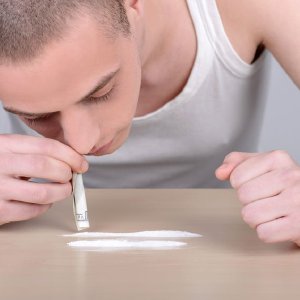Identifying a Heroin User By Their Pupils

Heroin is a member of the opiate family of drug substances, and as such is one of the most potent and addictive drugs currently in existence. The history of heroin is grim, and one that has been told numerous times before—it was initially developed with the intention of being a less potent and less addictive alternative to another drug (morphine) only to become an incredibly dangerous problem itself.
Heroin Addiction
There are many possible reasons for why an individual would choose to take any drug substance, including heroin, but the underlying commonality behind these reasons is that the individual believes that the drug will be able to help them in some way. As an opiate drug, heroin that is ingested quickly makes its way to the brain where it is converted back into morphine before it bonds with opiate receptors. This impairs the body’s normal ability to communicate pain. Heroin can also stimulate an intense feeling of pleasure and reward—which is the euphoric high most heroin users seek to achieve.
Over time, the individual’s body builds up a tolerance to heroin so that they no longer experience the same dramatic effects through the same amount of heroin use. Since the individual uses heroin as a solution to their problems, they often feel they cannot operate normally without it and will increase their heroin use compulsively and despite any negative effects. This is the path to heroin addiction, where the individual no longer has control over their heroin use but feels they must have it in order to make it by. This is also the reason why many heroin addicts rely upon help from others around them in order to step onto the path to recovery.
Identifying a Heroin User
Heroin effects can often be very difficult to detect, especially when the individual works hard to hide its use. Some of the effects the individual may try hard to hide include:
- A dry cough
- Loss of appetite
- Sudden and dramatic weight loss
- Dry mouth
- Heavy limbs
- Itchy skin
- Abscesses
- Infections
- Frequent nosebleeds
- Dark circles and bags under the eyes
- Flu-like symptoms, including fever, aches and pains, nausea, vomiting, and constant chill
- Constant runny nose and sniffing
- Needle marks
- Constipation
- Change of sleep patterns, especially excessive sleep
- Disorientation
- Slurred speech
- Apathetic behavior
- Poor hygiene
- And much more.
Unfortunately, even where several of these effects are evident, it can still be difficult for an onlooker to determine conclusively whether heroin use is occurring. This is especially true when the heroin user works very hard to hide or explain away the effects. However, there is one effect that they cannot completely hide or easily explain away, and it has to do with their eyes.
A heroin user may often wear sunglasses when it is entirely inappropriate to do so, and they may also avoid eye contact with others. This is because heroin can affect their eyes in very obvious ways—creating bloodshot eyes and constricted, pinpoint pupils. A heroin user’s pupils will not naturally dilate in lower light conditions but will remain constricted while the drug is in their system, and will usually only dilate when they are experiencing heroin withdrawal. An onlooker who observes this in a loved one can assume that opiate use is likely occurring, and rehabilitation treatment is necessary.
Getting Help
Fortunately, even an individual who is struggling with heroin addiction can successfully recover with the right rehabilitation treatment program that aids them in resolving the many causes and effects of their heroin use. That said, withdrawal from heroin and other opiates can be long and difficult without the proper support, and so should never be tried away from professional supervision. If you know someone who needs help recovering from heroin addiction, contact Narconon Arrowhead today at (877) 508-8151.


